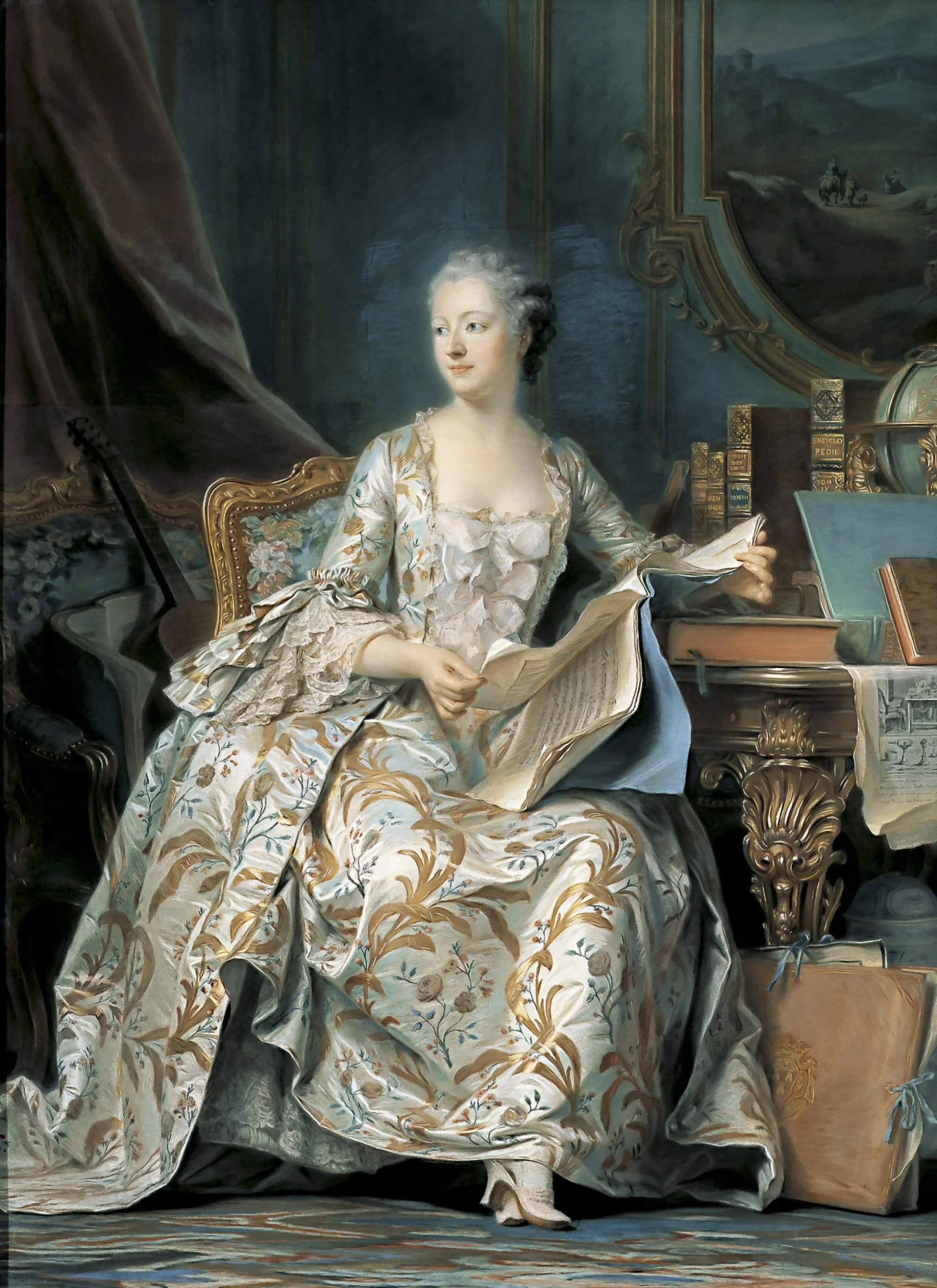What did Madame de Pompadour Really Look Like?
Jeanne Antoinette Poisson, better known as Madame de Pompadour, was the official mistress of King Louis XV from 1745 to 1751. But she was much, much more than a King’s lover. Coming from humble beginnings, Jeanne rose through the ranks and became masterful at making herself indispensable to those around her, all while pioneering the art, architecture, and style in France for years to come.
But what did she really look like? Let’s talk about her portraits and her appearance. For the full video with additional re-creations and more talk about her history, click here.
Jeanne’s History
As a child of middle class Paris, Jeanne’s parents raised her to become as fit as possible for a better life - a life at the French court. During her schooling, she learned acting, singing, fine arts, social etiquette, and more.
Soon, she was a social butterfly, flitting around the salons of Paris, constantly making new friends and expanding her hobbies and interests. One of the most impressive things about Jeanne was that she could hold a conversation about nearly anything - politics, floral arrangements, writing, poetry, or science.
When she crossed paths with some of the giants of the enlightenment period, like Voltaire, Montesquieu, and Charles Duclos, she held her own with each and every one. All were impressed by her quick wit and sharp tongue.
When she wasn’t in Paris, Jeanne and her husband Charles lived in their estate at Etiolles, which was situated very near royalty - right on the edge of the Royal Hunting grounds in the Forest of Senart.
Jeanne saw her opportunity. She was right under the nose of King Louis XV - and in 1744, she decided to make herself known to him.
One day, as the King hunted with his party, Jeanne just happened to be crossing through the hunting grounds, in a bright pink carriage, wearing a dress of vivid blue. Amongst the green of the forest, it was impossible not to notice her.
Upon returning home, she was notified that she had received a gift from the king: venison from his hunt. Her plan had worked flawlessly.
Only weeks later, Jeanne was living in an apartment in Versailles, directly above the king’s, as his new mistress. In September of 1745, Madame de Pompadour made her formal entry before the King.
Jeanne knew that the only way to survive at Versailles was to play the game of politics - and do it well. Hundreds of royal mistresses before her had floundered, failing to make an impression, and quickly losing the interest of the Kings they served. This would not be Jeanne - she intended to have real staying power, and wield her new power and influence wisely.
During her time as official mistress, and especially after (her affair with the king only lasted a few years), she played a pivotal role in making Paris the perceived cultural capital of Europe. Jeanne also pioneered what’s known as the Rococo Style of decorative arts - the kind of typically French, ornate, pastel style that we associate with Versailles and French culture today.
Jeanne’s Portraits & Appearance
It’s around this time that the most portraits of Madame de Pompadour are painted, many of which she commissioned herself, with very specific messages in mind. In fact, she became an expert at crafting her own image.
In nearly every portrait, we see symbols of her intellectual interests. She’s nearly always holding a book, for example, or lounging near a writing desk.
In this portrait, she’s studying a sheet of music, and a pamphlet about woodcut engraving, another one of her hobbies, lays next to her.
We can also see this careful use of symbolism in this sculpture, which she commissioned and gifted to the King. She has styled herself as the virtue “Friendship.” Even though her love affair with the King had ended, in this statue, she’s emphasizing her strong relationship with the crown and her loyalty to it.
She continues this spirit by leaning into a more matronly style in later portraits, despite being only in her late thirties, to show that she was more a woman of society and substance than just the King’s former mistress.
It was through this sort of careful positioning and propaganda that Jeanne was able to hold onto her power at court for many, many years. Throughout the rest of the 1750s and early 60s, she continued her cultural influence at court in an official capacity as “friend of the King”. King Louis and Jeanne remained inseparable.
Despite being in her late 30s, Jeanne begins to fashion herself in a more matronly manor, in order to show her staying power and loyalty at court.




